Helicopters have evolved from simple rotorcraft to massive, powerful machines capable of lifting incredible weights and performing crucial missions worldwide. From transporting troops in rugged terrains to lifting heavy machinery in remote locations, the largest helicopters in the world showcase engineering feats that push the limits of aviation. These towering giants vary in design, with unique features like double rotors and extended cargo holds to handle specific tasks. Whether they’re aiding in rescue missions or moving construction equipment, each of these helicopters stands out for its impressive size and capacity. Here’s a closer look at some of the largest helicopters ever built, each one demonstrating unparalleled strength and versatility in the air.
Mil Mi-26
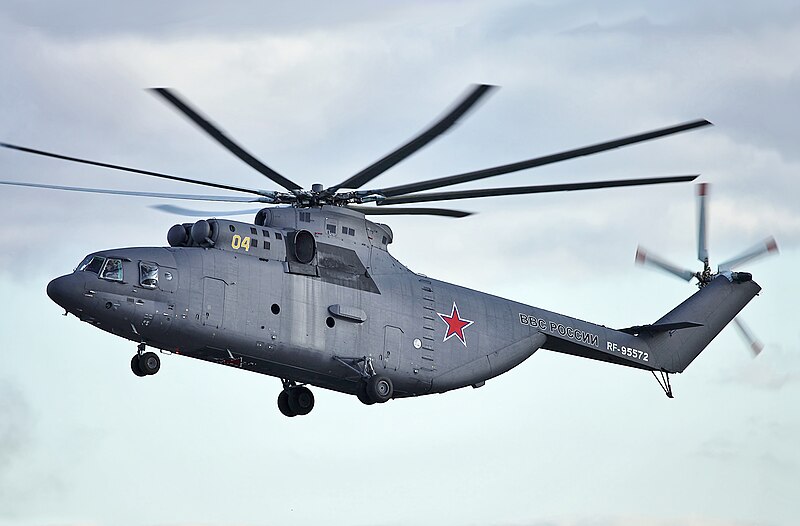
The Mil Mi-26, designed in the Soviet Union, holds the record as the world’s largest helicopter. It stretches 131 feet in length and stands nearly 26 feet tall. Known as the “Halo” in NATO terminology, this helicopter can lift a massive 20 metric tons, equal to carrying multiple fully loaded buses. Its eight-blade rotor system spans an impressive 105 feet, ensuring stable flight even under heavy loads. Used for military, civil, and humanitarian missions, the Mi-26 is an invaluable asset. The cabin is spacious enough to transport 80 passengers or large vehicles. Its sheer size and power are unmatched, making it a prominent symbol of Soviet engineering.
Sikorsky CH-53K King Stallion
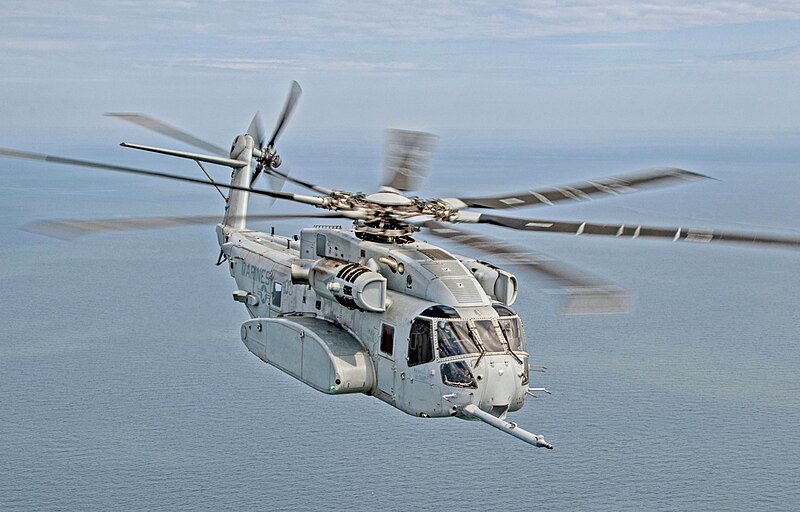
The Sikorsky CH-53K King Stallion, America’s most powerful helicopter, is designed for heavy-lift operations. With a length of 99 feet and a rotor diameter of 79 feet, this helicopter is a giant in the sky. Its payload capacity reaches 16 tons, accommodating armored vehicles, equipment, or troops. It’s equipped with three engines, providing both power and reliability, especially in challenging environments. Built with advanced composites, the King Stallion is lighter yet stronger than previous models. This helicopter can carry up to 55 troops or evacuate injured personnel quickly. Its size, technology, and lifting capacity make it a key component of modern military fleets.
Mil Mi-10 (Flying Crane)
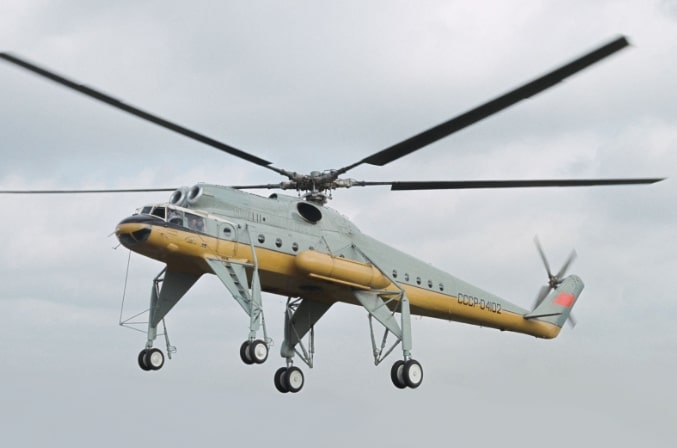
The Mil Mi-10, often called the “Flying Crane,” is a unique heavy-lift helicopter developed in the Soviet Union. Measuring 107 feet in length, it’s specifically designed for transporting large, heavy objects. The helicopter’s undercarriage is modified for stability during lift operations, capable of carrying loads up to 15 tons. Its long, tall structure supports a specialized platform for oversized cargo. Although primarily a utility helicopter, the Mi-10’s adaptability made it essential in Soviet infrastructure projects. With a unique skeletal frame and a low-slung cargo bay, it became a revolutionary helicopter in civil engineering. Today, it’s admired for its innovative approach to heavy lifting.
Boeing CH-47 Chinook
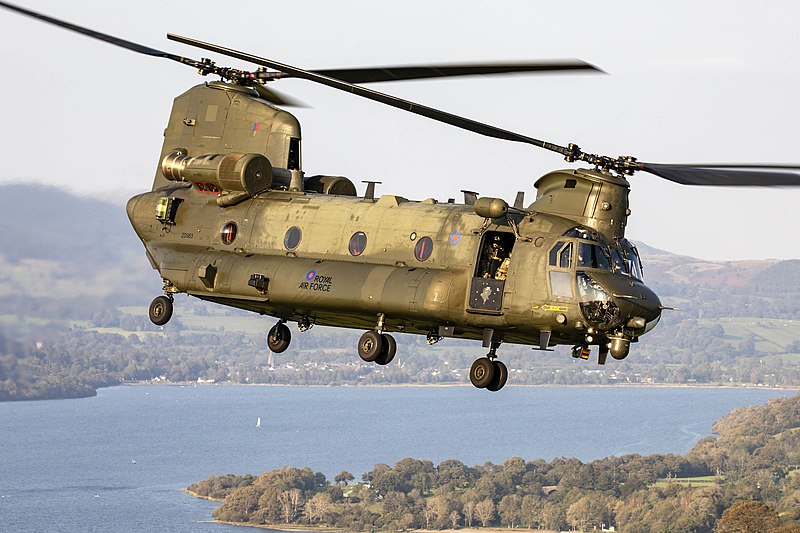
The Boeing CH-47 Chinook is an iconic heavy-lift helicopter widely recognized for its tandem rotor design. With a length of 98 feet and two 60-foot rotors, this helicopter is highly maneuverable and powerful. Capable of lifting up to 10 tons, the Chinook transports troops, vehicles, and supplies to remote areas. The twin rotors provide excellent stability, allowing it to perform missions in high altitudes or challenging weather. It’s a favorite among military forces worldwide, used extensively in combat and humanitarian missions. The Chinook’s dual-rotor design reduces the need for a tail rotor, maximizing payload space. Its large capacity and versatility make it one of the most relied-upon heavy-lift helicopters.
Mil Mi-6
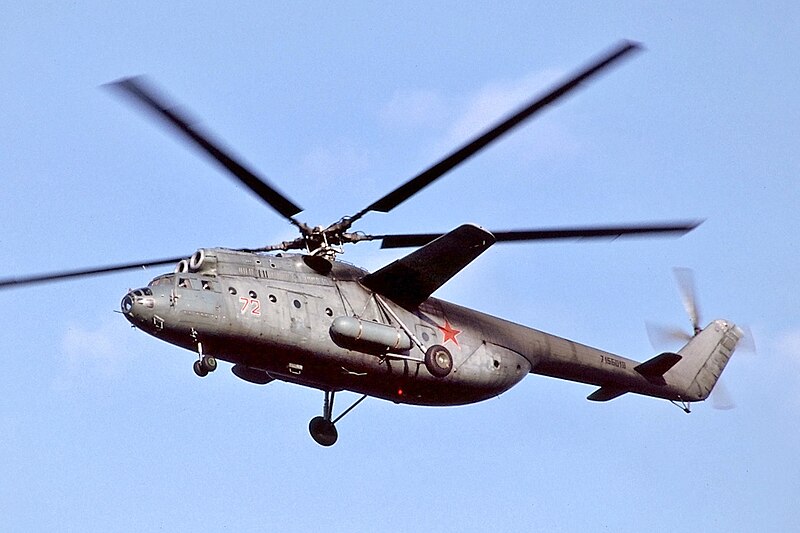
The Mil Mi-6 was once the world’s largest helicopter, holding records for its size and lifting capabilities. Spanning 109 feet in length and featuring a rotor diameter of 114 feet, it’s truly enormous. Capable of carrying up to 12 tons, the Mi-6 became a workhorse for the Soviet Union in both military and civilian capacities. Its impressive speed, reaching up to 186 mph, was revolutionary for helicopters of its time. Equipped with twin engines, it could carry dozens of passengers or heavy cargo. This helicopter also played a critical role in setting helicopter records in the 1960s. Its legacy as a pioneering heavy-lifter remains prominent in aviation history.
Sikorsky S-64 Skycrane
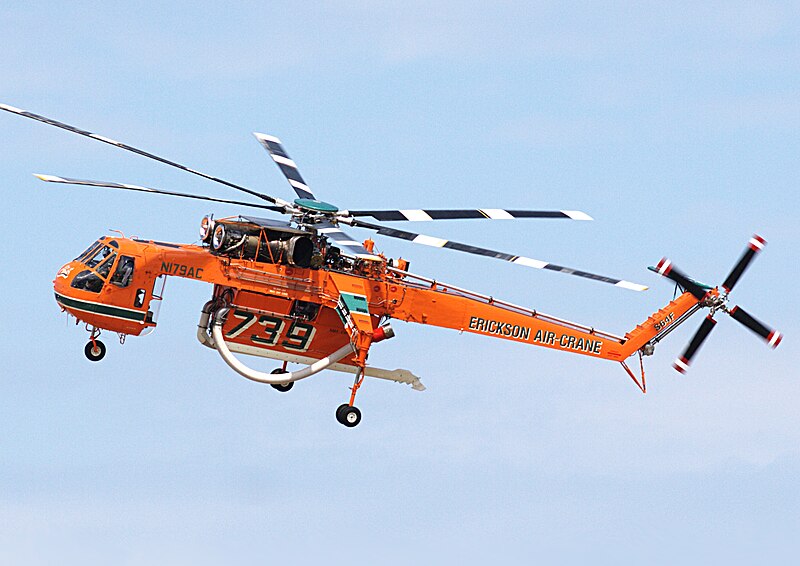
The Sikorsky S-64 Skycrane is a purpose-built helicopter designed exclusively for heavy-lifting. Its skeletal structure, spanning 88 feet, is optimized for transporting cargo up to 10 tons. Unlike conventional helicopters, the Skycrane has no fuselage, making it lightweight and adaptable for unique missions. Its six-blade rotor provides the stability and power needed for precision lifting, such as transporting heavy machinery and even buildings. This helicopter can lift loads directly below its frame, a unique advantage in firefighting, construction, and disaster relief. The Skycrane has earned fame for its aerial firefighting capabilities worldwide. Despite its bare design, it’s one of the most versatile helicopters for specialized missions.
Mil Mi-12
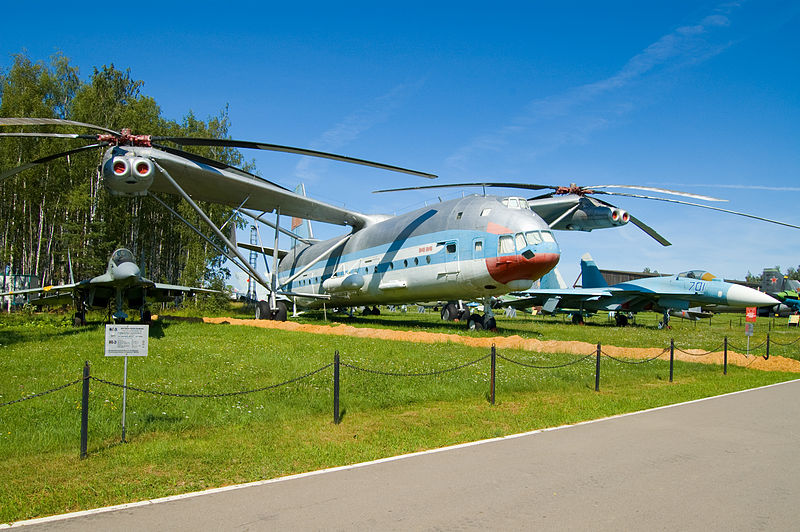
The Mil Mi-12, also known as the V-12, was an experimental Soviet helicopter and the largest ever built. With a staggering rotor span of 220 feet and a length of 121 feet, it towers over most other helicopters. Although it never entered mass production, it could lift up to 40 tons in test flights. Its twin-rotor design on side-mounted wings was unique, allowing balanced lift across its massive frame. Intended for military and heavy transport purposes, it represented a bold attempt to expand helicopter capabilities. The Mi-12 remains the heaviest helicopter ever constructed, even if only as a prototype. Its unmatched size is still a marvel in aviation history.
NHIndustries NH90

The NHIndustries NH90, a medium-lift military helicopter, may not be the longest, but its spacious design is highly effective. With a length of 52 feet and a rotor diameter of 53 feet, it’s optimized for troop transport and rescue operations. Capable of carrying up to 20 troops or 4 tons of cargo, the NH90 is ideal for rapid deployments. Its composite frame provides durability and resistance against harsh environmental conditions. Advanced avionics and a fully integrated mission system make it a technological asset in European forces. The NH90’s versatility allows it to operate in various environments, from maritime to desert terrains. Its combination of size and capability has made it popular in numerous military applications.
Eurocopter EC725 Caracal
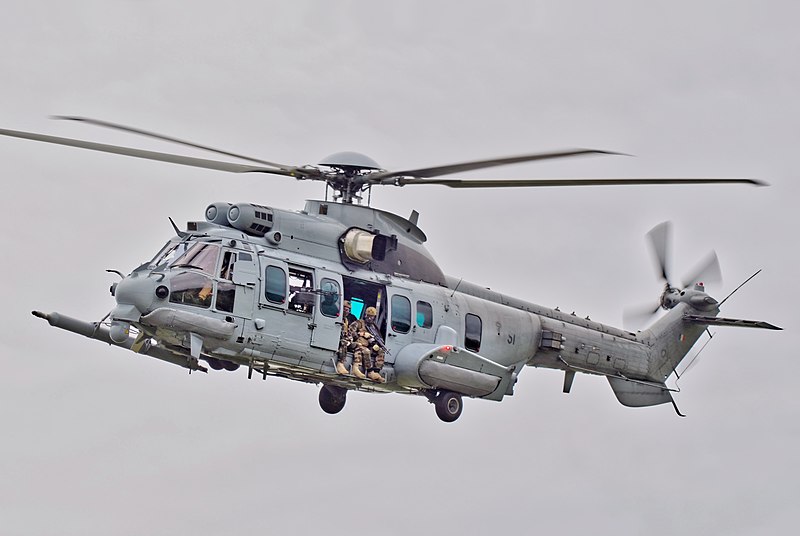
The Eurocopter EC725 Caracal, a long-range tactical helicopter, measures 64 feet in length and features a rotor diameter of 56 feet. It was developed to meet the rigorous demands of search and rescue missions. This helicopter can carry up to 28 troops or around 5.5 tons of cargo, making it suitable for various military applications. The EC725’s advanced avionics allow it to perform in adverse weather, enhancing mission safety. Its long-range capability is particularly valued for extended missions, providing operational flexibility. The Caracal is used by several countries due to its reliability in combat and humanitarian operations. Its moderate size and powerful engine make it an all-around utility helicopter.
AgustaWestland AW101 Merlin

The AgustaWestland AW101 Merlin, designed for medium to heavy lift, is 64 feet long with a rotor diameter of 61 feet. Developed collaboratively between Italy and the UK, the AW101 excels in search and rescue, anti-submarine warfare, and transportation. It can carry up to 38 troops or 5.5 tons of cargo, making it versatile across military roles. The Merlin’s three engines give it the power and range to operate in harsh conditions, from polar regions to deserts. With advanced flight control systems, it offers enhanced stability and safety in challenging missions. The AW101’s cabin is modular, allowing for rapid reconfiguration depending on the mission. It remains a critical asset for many nations.
Kamov Ka-32
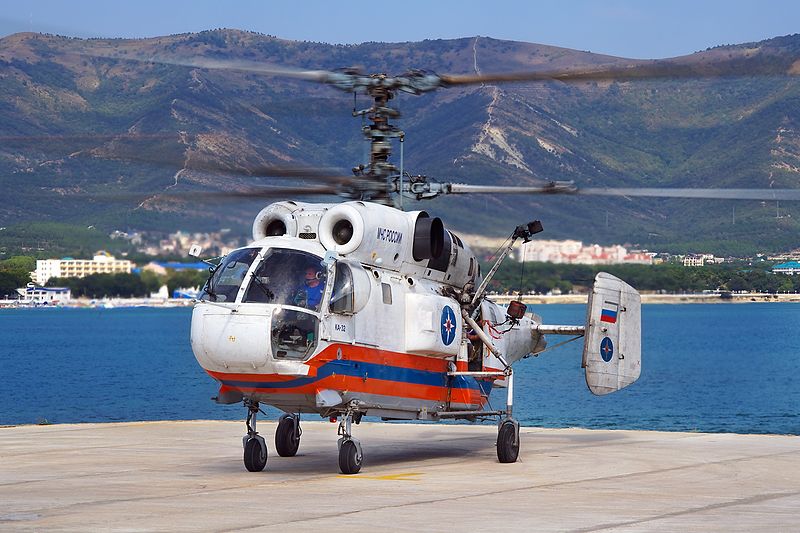
The Kamov Ka-32, a Russian-made medium-lift helicopter, stands out for its unique co-axial rotor design, with two rotors spinning in opposite directions. With a length of 37 feet and a rotor diameter of 50 feet, it’s compact but surprisingly powerful. The Ka-32 is commonly used for heavy-lifting, firefighting, and construction due to its stable hover capabilities. It can lift up to 5 tons, making it suitable for high-precision operations in tight spaces. The co-axial rotors eliminate the need for a tail rotor, adding stability and control in windy conditions. The helicopter’s sturdy frame and reliable engine allow it to perform well in extreme climates. Its versatility has made it popular worldwide, especially in challenging environments.
Sikorsky CH-54 Tarhe
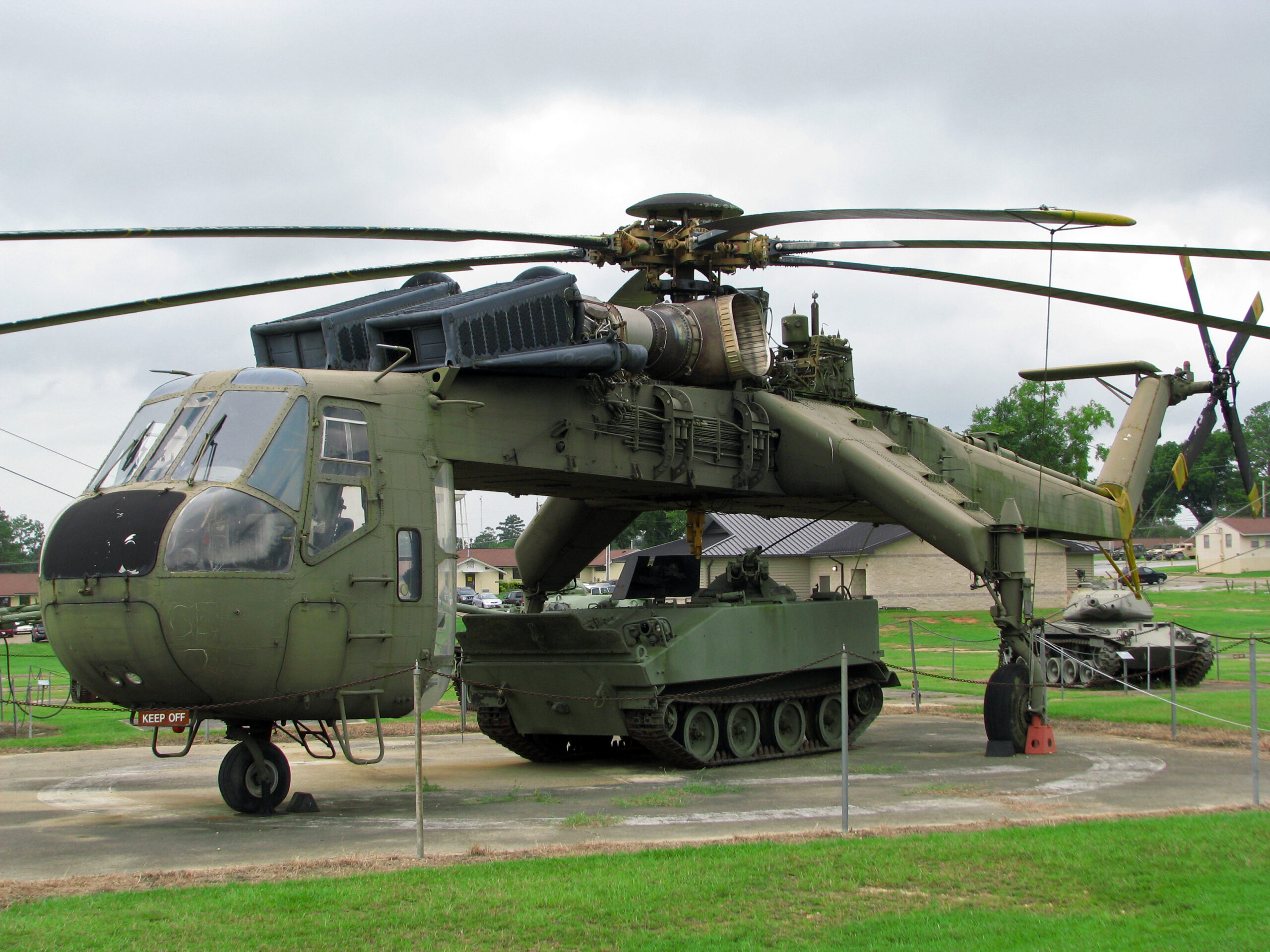
The Sikorsky CH-54 Tarhe, nicknamed “Skycrane,” was one of the most unique helicopters designed for heavy-lift missions. Measuring 88 feet in length and featuring a large skeletal frame, it could carry loads up to 10 tons. Unlike conventional helicopters, it lacks a fuselage, giving it a distinctive, open-frame structure perfect for carrying large, awkwardly shaped cargo. Used extensively during the Vietnam War, the CH-54 could transport trucks, artillery, and even other helicopters. Its six-blade rotor allowed for a stable hover while lifting massive loads beneath it. The helicopter also proved invaluable in post-disaster relief efforts, where it moved debris and equipment efficiently. Although retired, it remains legendary for its design and load-bearing capabilities.
Sikorsky MH-53 Pave Low
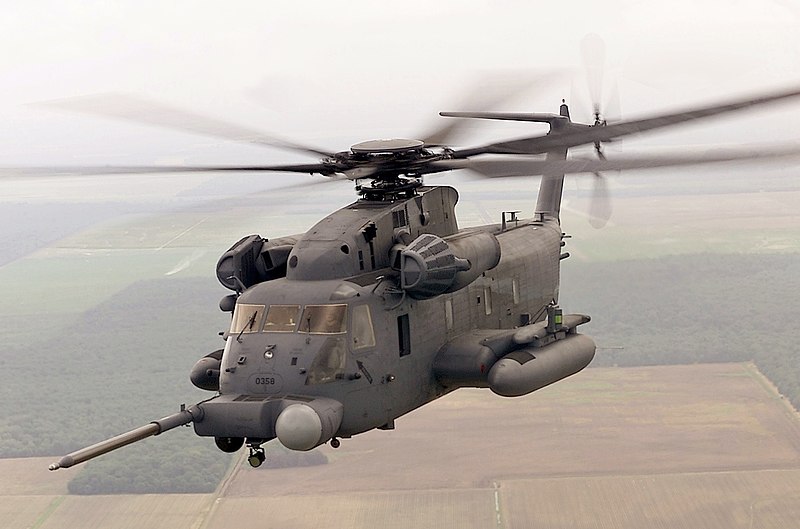
The Sikorsky MH-53 Pave Low, developed by the U.S. for special operations, is among the largest helicopters in the American military fleet. This heavy-lift helicopter measures around 88 feet in length and features a rotor diameter of 72 feet. Designed for long-range missions, the Pave Low can carry up to 7 tons of cargo, from troops to heavy equipment. It’s equipped with advanced radar and navigation systems, allowing for low-level flight even in adverse weather. The MH-53’s range, combined with its payload capacity, made it ideal for special operations and rescue missions. This helicopter has seen extensive use in high-stakes military operations worldwide. Its impressive size and advanced technology have cemented its reputation as a workhorse for the U.S. military.
Kaman K-MAX
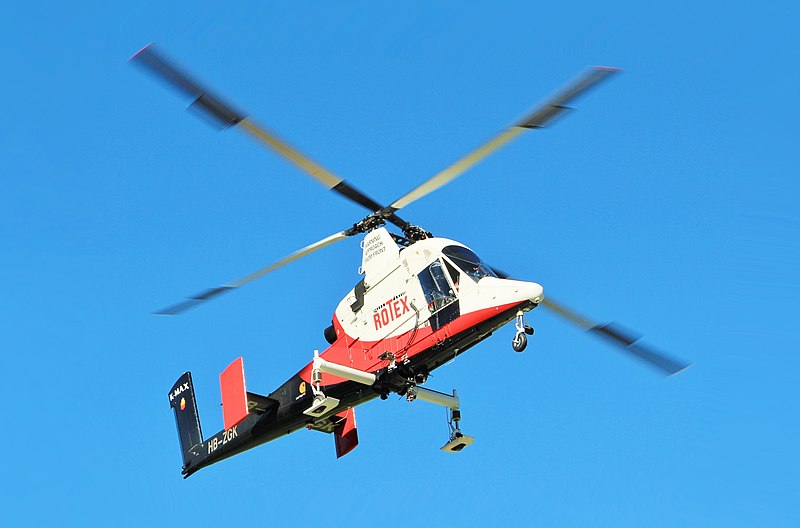
The Kaman K-MAX is a compact yet powerful helicopter known for its intermeshing rotors and precision-lift capabilities. At 52 feet in length, it’s relatively small, but its 45-foot rotor system enables it to lift loads up to 2.7 tons. Designed primarily for logging and construction, the K-MAX can carry heavy loads with remarkable stability. Its unique twin-rotor system provides precise control, making it a favorite for high-stakes operations in challenging terrain. The K-MAX’s minimalistic design focuses solely on lift capacity, allowing it to excel in tasks like aerial firefighting and supply transport. Its reliability in difficult environments has led to continued use in both civilian and military sectors. Despite its smaller size, it’s regarded as one of the most effective heavy-lift helicopters.
Eurocopter AS332 Super Puma
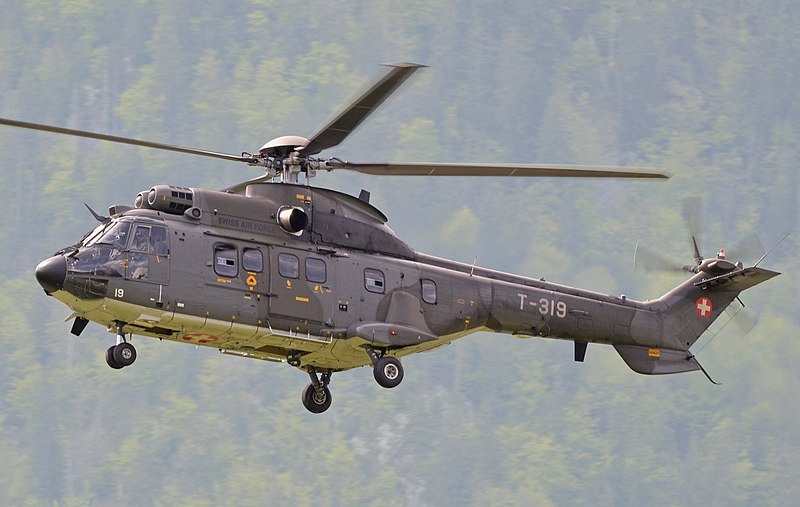
The Eurocopter AS332 Super Puma is a versatile medium-lift helicopter popular in both military and civilian roles. This 56-foot-long helicopter has a rotor diameter of 51 feet and can lift up to 4.5 tons. Known for its spacious cabin, the Super Puma can transport up to 24 passengers or a considerable amount of cargo. It’s widely used for search and rescue missions, offshore oil transport, and military applications. The Super Puma’s advanced avionics and reliability in adverse weather make it a preferred choice for challenging missions. This helicopter’s design emphasizes durability, with corrosion-resistant materials enhancing its performance over the years. Its robust structure and reliable engines make it a mainstay for international operations.
Mi-38
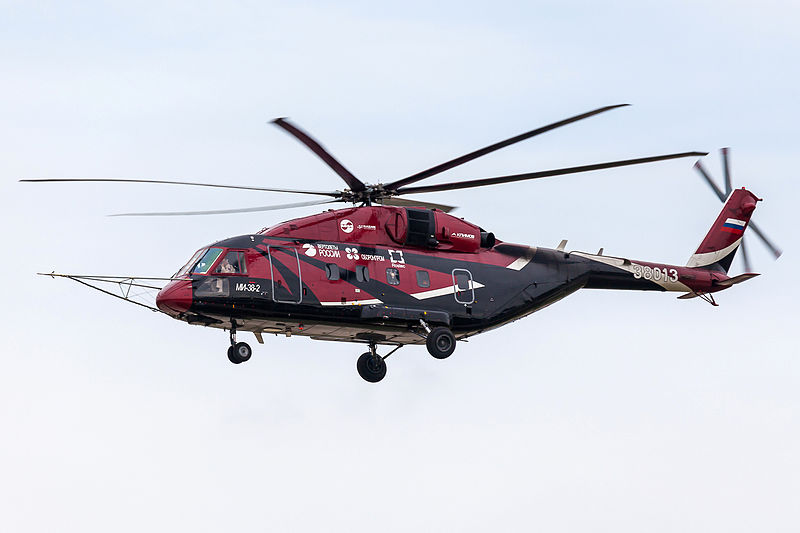
The Mi-38 is a Russian medium-lift helicopter developed to replace the aging Mi-8 model. With a length of 66 feet and a rotor diameter of 70 feet, it can carry up to 6 tons of cargo. The Mi-38’s cabin is spacious, accommodating 30 passengers or large cargo loads, making it suitable for various roles, including transport and search and rescue. This helicopter is designed with advanced avionics and reduced maintenance requirements for efficiency in remote areas. Its powerful engines allow it to operate in extreme weather conditions, from Arctic cold to desert heat. The Mi-38’s versatility and size have made it popular among Russian industries and international operators. It represents a new generation of heavy-lift helicopters with enhanced capabilities.
Westland Sea King

The Westland Sea King is a British-built, multi-role helicopter with a history of military and rescue missions. This helicopter measures 54 feet in length with a rotor span of 62 feet, allowing it to carry up to 3 tons of equipment or rescue personnel. Known for its durability, the Sea King is widely used in naval search and rescue, anti-submarine warfare, and medical evacuation. It features advanced radar and sonar systems, making it effective for maritime missions. The Sea King’s large cabin can accommodate up to 28 people or be outfitted for medical transport. Its reliability in harsh weather has made it a vital asset in emergency response efforts worldwide. Though phased out in some regions, it remains operational in many countries due to its robust design.
Bell Boeing V-22 Osprey
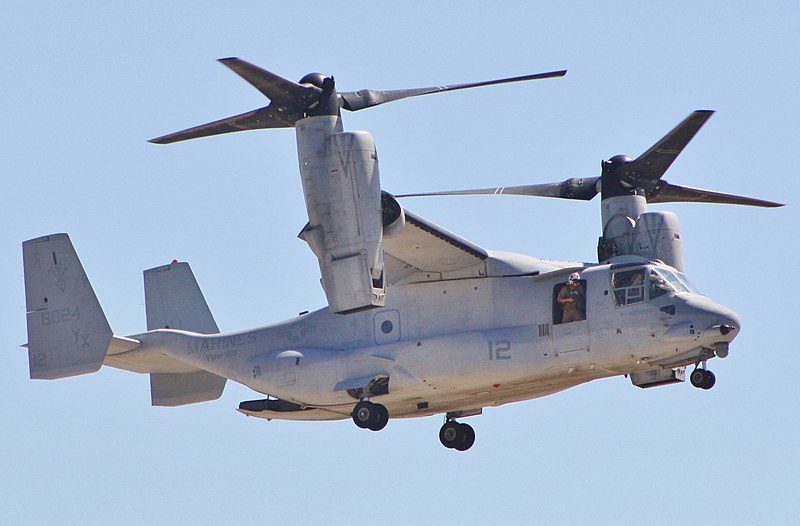
The Bell Boeing V-22 Osprey is a tiltrotor aircraft, combining features of both a helicopter and an airplane. With a wingspan of 46 feet and a length of 57 feet, it’s capable of vertical takeoff and landing, making it highly versatile. The V-22 can carry up to 9 tons of cargo or 24 troops, providing flexibility for military operations. Its tiltrotor system allows it to reach speeds much faster than traditional helicopters, enhancing mission reach and response times. This aircraft is used extensively by the U.S. military, particularly in locations where rapid deployment is essential. Its unique design enables it to perform tasks that conventional helicopters cannot achieve. The V-22’s size and adaptability make it one of the most innovative aircraft in modern aviation.
CH-146 Griffon
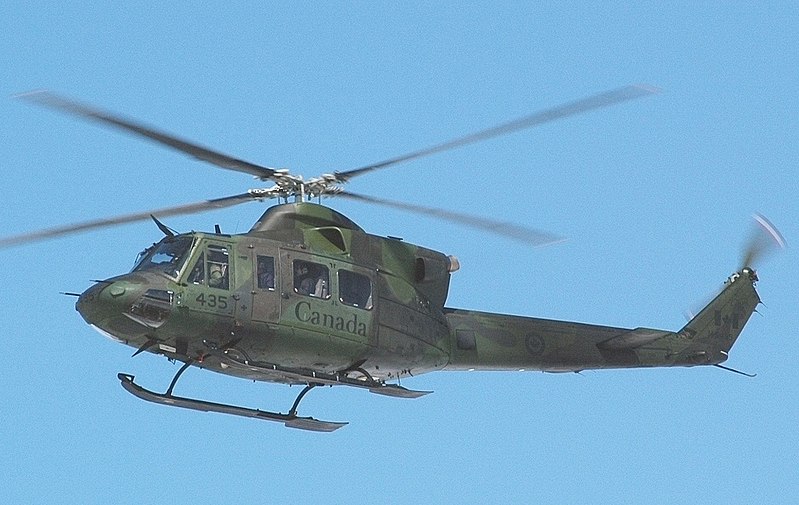
The CH-146 Griffon, based on the Bell 412, is a medium-lift utility helicopter used primarily by the Canadian military. It measures about 57 feet in length and has a rotor diameter of 46 feet, allowing for versatile transport capabilities. The Griffon can carry up to 13 passengers or 2.5 tons of cargo, making it suitable for tactical transport, search and rescue, and medical evacuation. Its compact size and maneuverability allow it to operate efficiently in rugged environments. The CH-146 is equipped with advanced avionics for high-altitude and night operations. The Griffon’s flexibility makes it invaluable for a range of missions, from peacekeeping to disaster response. Despite its moderate size, it’s a highly capable and adaptable helicopter.
Mi-8/17 Hip
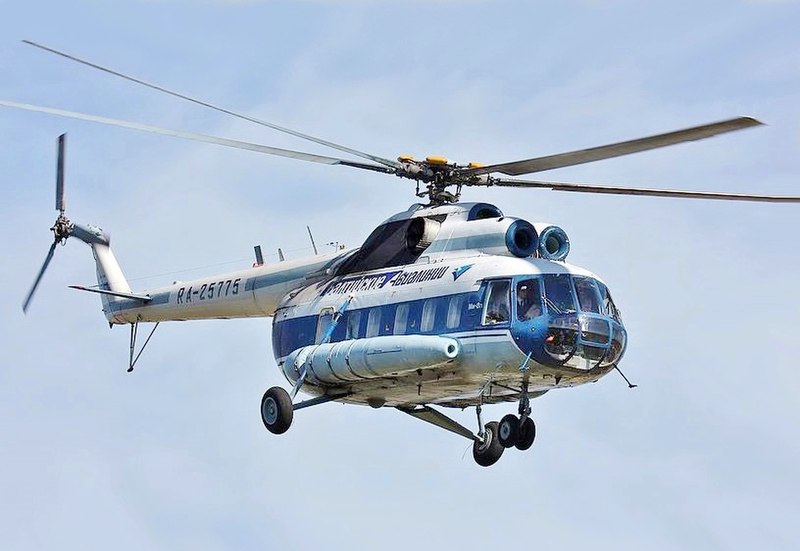
The Mi-8/17, known as “Hip,” is a Soviet-designed utility helicopter that has become one of the most widely used helicopters in the world. With a length of 60 feet and a rotor diameter of 69 feet, it can carry up to 4 tons of cargo or 24 passengers. This helicopter is favored for its durability, capable of operating in harsh climates and rugged terrains. The Mi-8/17 is employed by over 50 countries in military, rescue, and civil missions, known for its reliability and low maintenance requirements. Its simple design allows for easy modifications, making it adaptable for various uses. The helicopter’s range and capacity are impressive, allowing it to serve as a transport workhorse. Its continued use worldwide reflects its effectiveness in diverse roles.
This article originally appeared on Rarest.org.
More From Rarest.Org
12 Largest Air Forces in the World
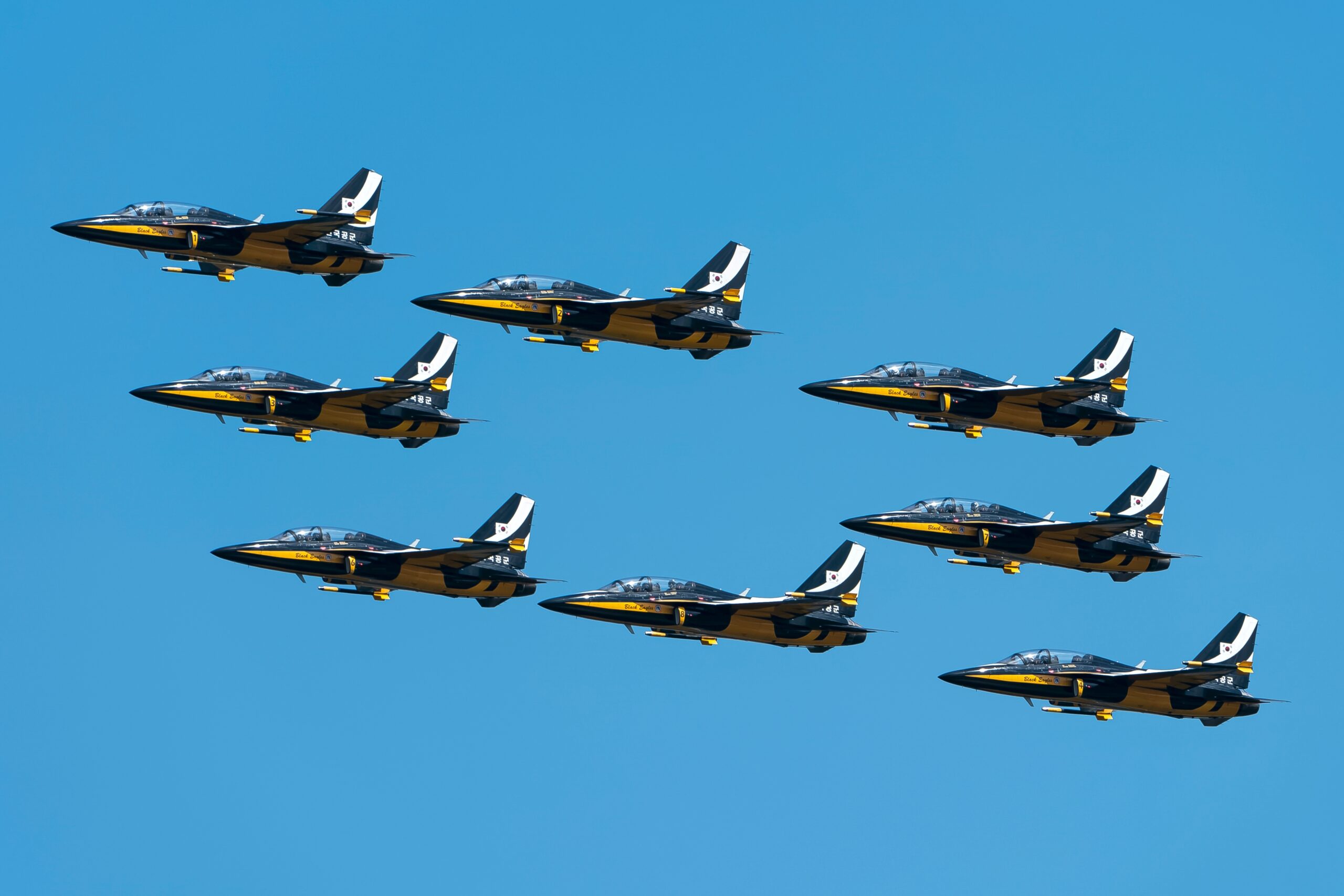
The strength of a nation’s air force plays a significant role in its defense capabilities. The largest air forces in the world are known for their impressive fleets of aircraft and highly trained personnel. Read more.
12 Oldest U.S. Presidents Ever
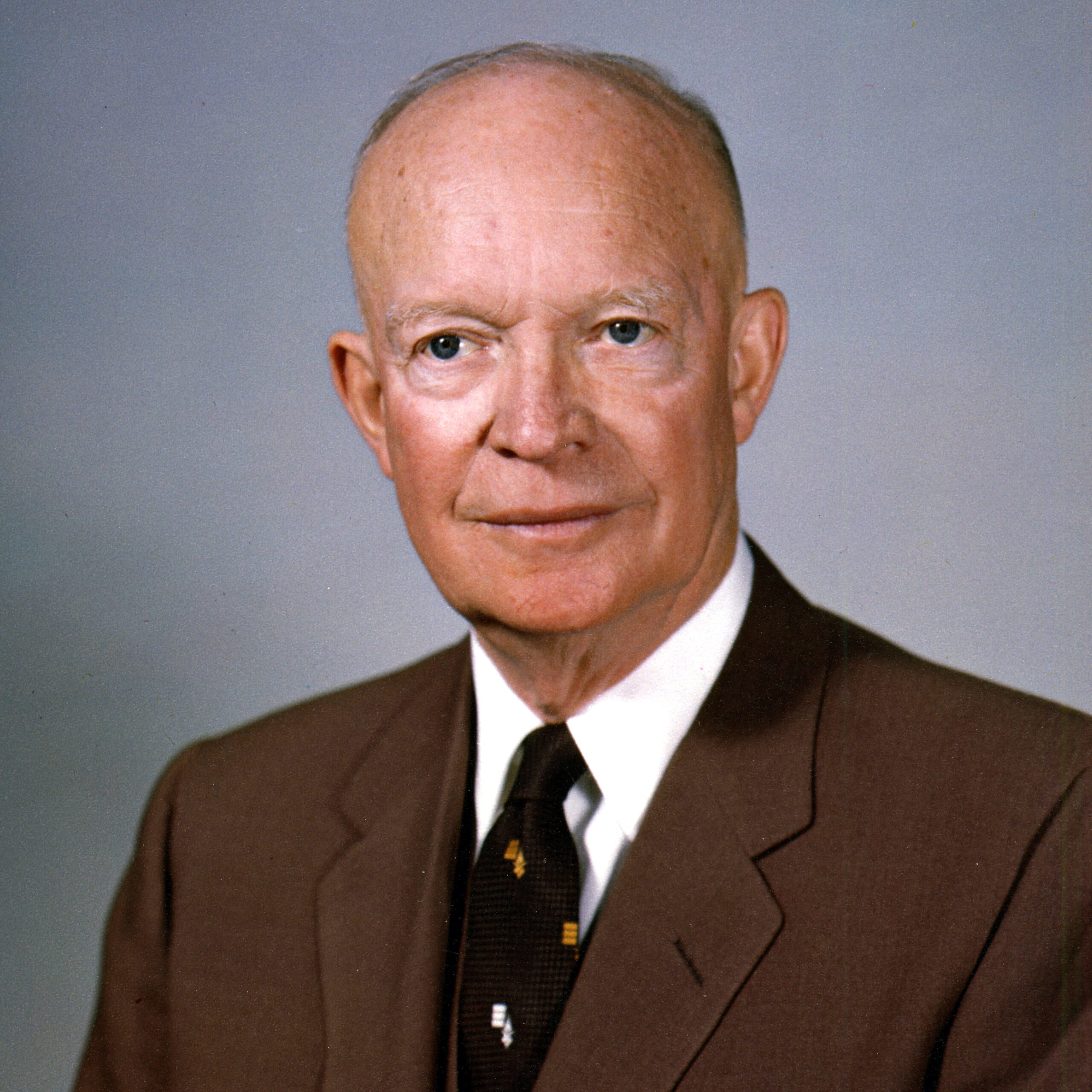
Age has always been a point of interest for those holding the highest office in the United States. While younger leaders often bring energy, some of the nation’s oldest presidents have brought wisdom and years of experience to the role. Read more.
13 Abandoned Palaces That Were Once the Height of Luxury
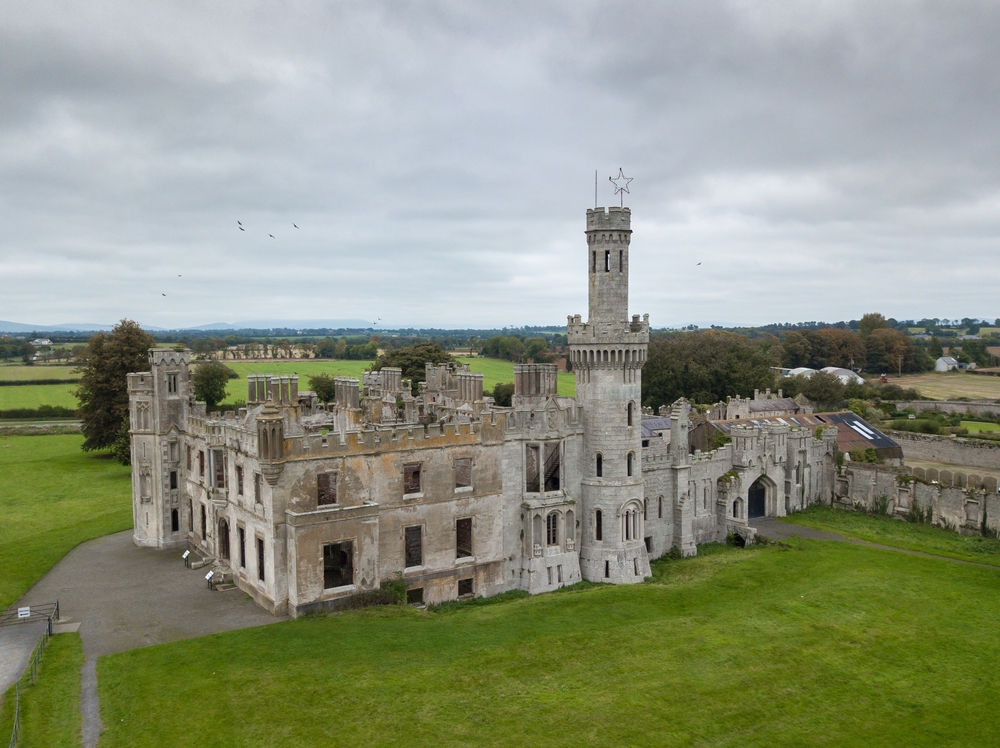
Abandoned palaces, once symbols of wealth, power, and grandeur, now stand as haunting reminders of history’s passage. These palatial structures, left to decay over the centuries, tell fascinating stories of royalty, architectural brilliance, and the forces that led to their downfall. Read more.
